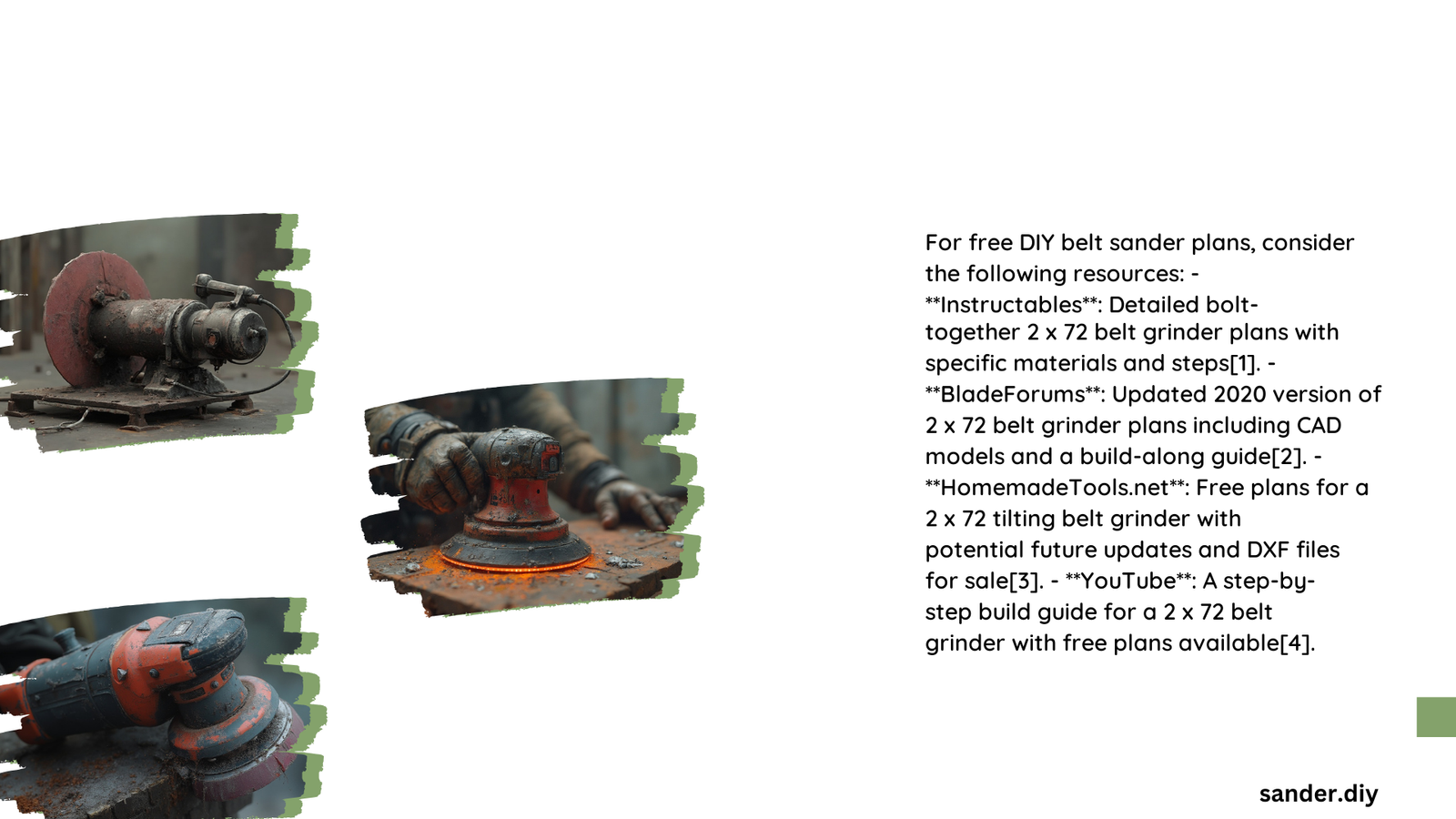Building a DIY belt sander can transform your workshop capabilities while saving hundreds of dollars on commercial equipment. Hobbyist woodworkers and metalworkers can create a robust, customized belt sander using readily available materials like steel tubing, plywood, and standard motor components. This comprehensive guide provides free plans, detailed specifications, and expert insights for constructing a professional-grade belt sander from scratch.
What Are the Essential Components for a DIY Belt Sander?
Frame and Structure Requirements
A successful DIY belt sander depends on selecting the right materials and understanding structural dynamics. Consider these critical components:
| Component | Recommended Materials | Typical Dimensions |
|---|---|---|
| Frame Base | Steel angle iron or 3/4” plywood | 24-30 inches height |
| Motor Mount | Square tubing | Varies by design |
| Work Surface | Flat steel stock or hardwood | 12-18 inches width |
Key Material Considerations
- Steel Frame Advantages:
- Superior rigidity
- Enhanced durability
-
Minimal vibration during operation
-
Wooden Frame Benefits:
- Lower cost
- Easier to fabricate
- Lightweight construction
How to Select the Right Motor?
Choosing an appropriate motor is crucial for your DIY belt sander’s performance. Most hobbyist designs recommend:
- 1 horsepower electric motor
- Variable frequency drive (VFD) for speed control
- Compatibility with standard 110V/220V power sources
What Tools Will You Need?
Essential tools for constructing a DIY belt sander include:
- Welding equipment (for steel frames)
- Drill press
- Angle grinder
- Measuring tape
- Level
- Wrenches and socket set
Step-by-Step Belt Sander Construction Process

Designing the Base Frame
- Create a stable, level foundation
- Ensure proper motor alignment
- Plan for belt tracking mechanisms
- Design adjustable work rest
Pulley and Belt System Installation
Critical considerations for pulley installation:
- Use precision-machined pulleys
- Ensure perfect belt alignment
- Select appropriate belt size (typically 2×72 inches)
- Implement tension adjustment mechanism
Cost-Effective Material Sourcing
Budget Breakdown
| Material Category | Estimated Cost Range |
|---|---|
| Steel Components | $100 – $200 |
| Motor and VFD | $100 – $250 |
| Miscellaneous Hardware | $50 – $100 |
| Total Project Cost | $250 – $550 |
Advanced Customization Tips
- Add digital speed control
- Implement dust collection system
- Create interchangeable work surfaces
- Design quick-change belt mechanism
Common Challenges and Solutions
- Vibration Control: Use rubber mounting points
- Alignment Issues: Create precise drilling templates
- Motor Compatibility: Verify electrical specifications
Safety Recommendations
- Wear appropriate personal protective equipment
- Follow electrical safety guidelines
- Ensure proper grounding
- Maintain clean, organized workspace
Final Recommendations
Successful DIY belt sander construction requires patience, precision, and careful planning. Take time to research, gather quality materials, and prioritize safety throughout the build process.
References:
– Mazay DIY 2×72 Belt Grinder Plans
– Instructables Belt Sander Conversion
– Bolt Together Belt Grinder Plans
